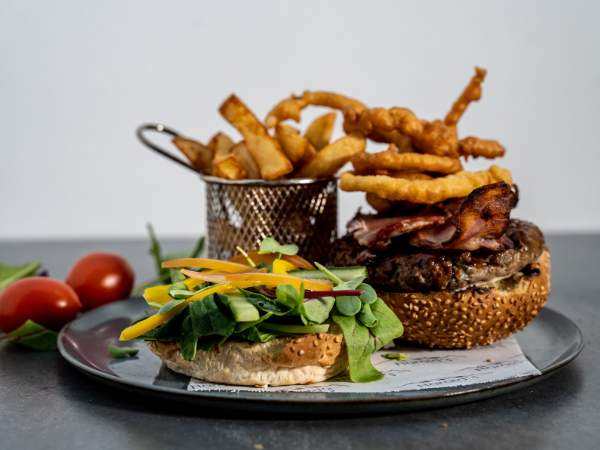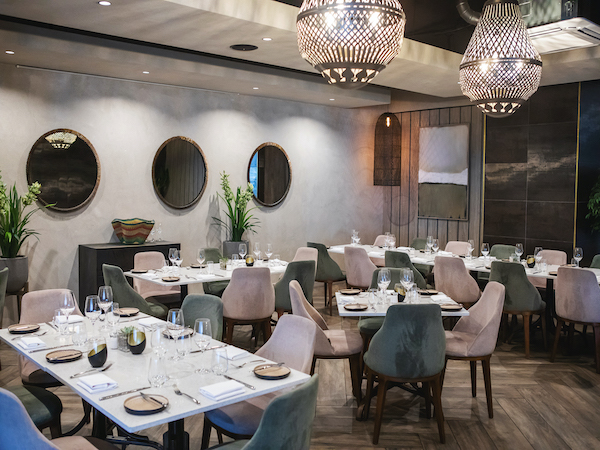News
Local lingo
Monday, August 30th, 2010Mogodu? Moerkoffie? Mopani? Once you know what they are, it’s easy to navigate your way around local menus.
African
AmadumbeThis versatile tuber looks very much like a sweet potato, but has a blander, nuttier taste. Try it at any township or African restaurant as a nutty mash – an accompaniment to game.
ChakalakaAn essential sauce, relish or salad that is traditionally served with pap but goes with anything nowadays and is particularly good with shisa nyama (braaied meat). It’s used in many other ways too – from chakalaka-dusted cheese to sticky lamb chops basted in the sweet yet fiery relish.
Shisa NyamaA sort of one-stop carnivore stop where you can buy, braai and eat meat all in one go. The meat is fresh, the sides are plenty, and the kwaito music is pumping. It’s also used to denote “braaied meat”.
ChotloThis Tswana delicacy is made by boiling thin strips of deboned meat until tender and then grinding it into a very fine paste. Look out for it in traditional African restaurants.
IsiduduA mielie-pap dish simmered with pumpkin, curried cabbage and liver. Enjoy it on its own or as an accompaniment to meat dishes.
MageuA milky, non-alcoholic beverage made with fermented mielie porridge, it can be found in most township restaurants and shebeens.
MalaChicken intestines that are boiled and then deep-fried.
MaotwanaSimilar to mala, chicken legs are boiled to remove the hard skin, then salted and deep-fried.
MashonzhaMopani worms fried with onion, tomato and peri-peri. Dine on this delicacy in traditional restaurants or from street vendors.
MogoduBoiled tripe, prepared in a myriad ways – from plain to curried.
Mopani wormThis creepy critter is a predecessor of the Emperor moth, and can be enjoyed dried, fried or stewed.
MorogoAlso known as African spinach, the dark green leaves are boiled and traditionally served with pap or samp and will be found alongside most main-course dishes.
SerobeThis traditional Tswana dish comprises boiled, spiced tripe, intestines and lungs. Offally good!
UmngqushoAlso known as samp and beans, this Xhosa speciality is made by boiling sugar beans with coarse mielie meal. It’s a favourite of former-president Nelson Mandela.
UmqombothiImmortalised in the song by Yvonne Chaka Chaka, this home-brewed Xhosa beer is made with mielie meal, sorghum, yeast and water.
Boerekos (traditional Afrikaner fare)
BiltongOur Voortrekker forefathers preserved meat in vinegar and a mixture of spices and then hung it out to dry. This provided them with sustenance and an assured supply of meat during their long treks across Southern Africa. Now enjoy it in an array of modern incarnations: biltong-dusted fillets, biltong salad, and even biltong-and-blue-cheese soup.
BoereworsSpicy, succulent and unique-tasting, this satisfying farmer’s sausage was introduced to South Africa by German immigrants who settled in the Cape Colony. It's traditionally spiced with coriander and vinegar and stuffed into casing. This SA staple is best enjoyed in soft white rolls with chutney and chilli, but it’s versatile enough to eat as part of a generous farm breakfast, or even on a pizza!
BokkomsThis West Coast specialty is made by salting and air-drying bushels of southern mullets. Some West Coast restaurants serve them on toast, marinated in a spicy tomato sauce.
KoeksisterStrips of buttermilk dough are plaited, deep-fried and then soaked in a ginger-cinnamon syrup. Find them at padstals (farm stalls) across the country or in a deconstructed form on dessert menus in slick city restaurants.
Melktert (milktart) Hailing from the Netherlands, this baked milky pudding was assimilated into South African culture with the arrival of the VOC. The cinnamon sprinkled on top is a Malay addition. Small town restaurants show traditional devotion to this after-dinner treat.
MoerkoffieExtra-strong coffee, preferably brewed over the coals and enjoyed in a tin cup with at least three teaspoons of sugar – the perfect kickstart after a rich boerekos meal.
Vetkoek (also known as amagwinya)Cooked in oil (hence the name), vetkoek can be enjoyed savoury, filled with mince; or sweet, drizzled with syrup or honey and cinnamon. The Voortrekker wives found it easier and quicker to make vetkoek and fry them in oil than to knead bread. Definitely not for weight-watchers, but a must-try all the same.
Indian
AtcharMeaning pickle in Hindi, this fiery condiment can be made from a variety of fresh fruit and vegetables – mango, chilli and lime being the most popular. Make sure to order the mango atchar with your fish tikka.
Bunny chowThis meal-in-one originates from Durban’s sugarcane-field labourers who had little time to assemble their curries, rice and sambals in separate containers. They devised a hollowed out half-loaf as a vessel for their curries and a quick way to eat their lunch during their short breaks. This versatile meal can be found in some upmarket restaurants, but it’s most commonly found in cheap and cheerful locales.
Chilli bitesAlso known as bhajias, these morsels are made from a combination of chickpea flour, potato, coriander and a variety of spices. They are then deep-fried in spoonfuls to create spicy bites that are enjoyed at any time of the day.
SamoosaA popular snack in local Indian and Cape Malay cuisines, these deep-fried triangular pastries are filled with curried fish, meat or veg and are often seen on tapas menus.
Cape Malay
Biryani Hailing from Persia and originally called berya(“fried” in Persian), this delicately spicy rice-based dish was introduced to South Africa by the Cape Malay slaves in the 17th century, and is now a staple in many Cape Town restaurants.
Bobotie Derived from the Indonesian bobotok, this aromatic baked dish is made with mince spiced with masala powder, which is topped with an egg custard.
Hertzoggie This jam-filled short-crust pastry topped with coconut meringue was first created by the Cape Malay people in honour of General Hertzog, when he made an election promise to give slaves equal rights. When he reneged on his promise, the cookie was transformed with pink and brown icing and redubbed "twee gevreetjie" or “two-faced”. Find this treat at most traditional restaurants or bakeries.
Piekelvis (pickled fish) According to Lannice Snyman, it dates back to the 1800s, when Cape housewives made the most of the snoek run by pickling the fish with onions in curry, vinegar and spices to store as a pantry staple. It is traditionally served over Easter, but can be found all year round, especially in rustic beach kitchens.
Sosatie This spicy kebab was pioneered by the Cape Malay people. Cubes of meat, usually mutton, are marinated in chilli, garlic, curry leaves, tamarind juice and fried onions, and then grilled on the braai, or crisped up on a flat-top grill.








